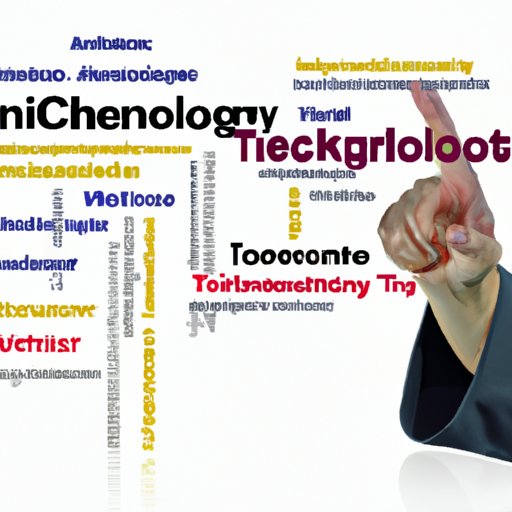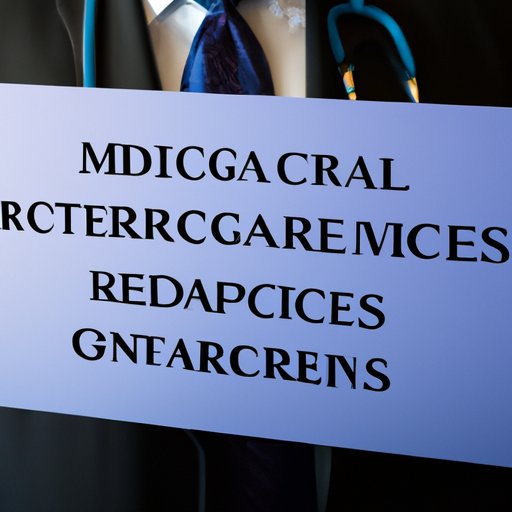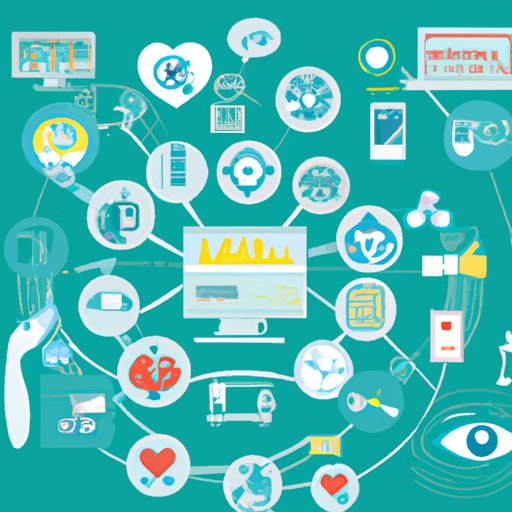Introduction
The healthcare industry is rapidly evolving, with technology playing a major role in driving innovation and improving patient care. Technological advances such as artificial intelligence (AI), mobile apps, and electronic data capture have revolutionized the way healthcare is delivered. From automating administrative tasks to enhancing diagnostic accuracy, technology is having a profound impact on the healthcare sector.

Definition of Technology in Healthcare
Technology in healthcare refers to the use of various forms of technology for the purpose of improving patient care. This includes the use of computer systems, software, medical equipment, and other technological tools. It is used to automate administrative tasks, enhance communication between doctors and patients, improve diagnostic accuracy, facilitate remote consultations, and streamline clinical trials.
Overview of Benefits
The use of technology in healthcare has revolutionized the industry, making medical services more accessible, accurate and efficient. According to a study by the World Health Organization, the use of technology has resulted in significant improvements in health outcomes, including reduced mortality rates, improved access to quality care, and shorter hospital stays.
Automating Administrative Tasks
One of the key benefits of technology in healthcare is its ability to automate administrative tasks. This can help reduce the workload of healthcare professionals, freeing up their time to focus on providing patient care. Here are some of the ways technology is being used to automate administrative tasks:
Automating Appointments
Technology can be used to automate the appointment-scheduling process. This can help streamline the scheduling process, reducing waiting times and improving the patient experience. In addition, automated appointment scheduling can help reduce no-shows, which can result in lost revenue for healthcare providers.
Electronic Medical Records
Electronic medical records (EMRs) are digital versions of paper medical records. They can be used to store patient information, such as medical history, lab results, and medications. This can help healthcare providers access patient information quickly and easily, improving the accuracy and efficiency of care.
Automated Billing Systems
Automated billing systems can be used to streamline the billing process, reducing paperwork and improving accuracy. This can help healthcare providers save time and money, while also reducing the risk of errors.
Enhancing Communication between Doctors and Patients
Technology can also be used to enhance communication between doctors and patients. This can help improve patient satisfaction and ensure that medical advice is delivered in a timely manner. Here are some of the ways technology is being used to improve communication in the healthcare sector:
Use of Video Conferencing
Video conferencing technologies can be used to facilitate virtual consultations between doctors and patients. This can help reduce travel costs and waiting times, while also allowing patients to receive medical advice from the comfort of their own home.
Use of Text Messaging
Text messaging can be used to send reminders about appointments and medication refills. It can also be used to provide patients with general health advice, helping to improve health outcomes.
Online Medical Portals
Online medical portals can be used to provide patients with access to their medical records and test results. This can help improve transparency and enable patients to make informed decisions about their health.
Improving Diagnostic Accuracy
Technology can also be used to improve diagnostic accuracy. This can help healthcare providers identify illnesses earlier and provide more effective treatment. Here are some of the ways technology is being used to improve diagnostic accuracy:
Artificial Intelligence
AI can be used to analyze medical images and detect diseases earlier than traditional methods. This can help doctors diagnose illnesses more accurately and provide more effective treatment.
Computer-Assisted Diagnosis
Computer-assisted diagnosis (CAD) systems can be used to analyze medical images and detect abnormalities. This can help healthcare providers identify illnesses earlier and provide more effective treatment.
Automated Image Analysis
Automated image analysis can be used to analyze medical images and detect abnormalities. This can help healthcare providers identify illnesses earlier and provide more effective treatment.

Enhancing Access to Medical Records
Technology can also be used to enhance access to medical records. This can help healthcare providers access patient information quickly and easily, improving the accuracy and efficiency of care. Here are some of the ways technology is being used to enhance access to medical records:
Cloud Storage
Cloud storage solutions can be used to store patient information, such as medical records, lab results, and medications. This can help healthcare providers access patient information quickly and easily, improving the accuracy and efficiency of care.
Mobile Apps
Mobile apps can be used to provide patients with access to their medical records and test results. This can help improve transparency and enable patients to make informed decisions about their health.
Facilitating Remote Consultations
Technology can also be used to facilitate remote consultations between doctors and patients. This can help reduce travel costs and waiting times, while also allowing patients to receive medical advice from the comfort of their own home. Here are some of the ways technology is being used to facilitate remote consultations:
Telemedicine
Telemedicine technologies can be used to facilitate virtual consultations between doctors and patients. This can help reduce travel costs and waiting times, while also allowing patients to receive medical advice from the comfort of their own home.
Remote Monitoring
Remote monitoring technologies can be used to monitor patient health remotely. This can help healthcare providers keep track of a patient’s health and provide timely interventions when needed.
Streamlining Clinical Trials
Technology can also be used to streamline clinical trials. This can help reduce the cost and time associated with conducting clinical trials, while also ensuring that data is collected accurately and efficiently. Here are some of the ways technology is being used to streamline clinical trials:
Electronic Data Capture
Electronic data capture (EDC) systems can be used to collect data from clinical trials electronically. This can help reduce the cost and time associated with collecting data, while also ensuring that data is collected accurately and efficiently.
Patient Recruitment
Technology can be used to streamline the process of recruiting patients for clinical trials. This can help reduce the cost and time associated with recruiting patients, while also ensuring that the right patients are recruited for the trial.
Integrating Wearable Devices
Technology can also be used to integrate wearable devices into the healthcare system. This can help healthcare providers monitor patient health and provide timely interventions when needed. Here are some of the ways technology is being used to integrate wearable devices:
Tracking Health Data
Wearable devices can be used to track patient health data, such as heart rate, blood pressure, and activity levels. This can help healthcare providers monitor patient health and provide timely interventions when needed.
Connecting with Physicians
Wearable devices can also be used to connect patients with their physicians. This can help healthcare providers monitor patient health remotely and provide timely interventions when needed.
Conclusion
Technology has revolutionized the healthcare industry, making medical services more accessible, accurate and efficient. From automating administrative tasks to integrating wearable devices, technology has had a profound impact on the healthcare sector. The use of technology has resulted in significant improvements in health outcomes, including reduced mortality rates, improved access to quality care, and shorter hospital stays. As technology continues to evolve, it is likely that these benefits will only continue to grow.
(Note: Is this article not meeting your expectations? Do you have knowledge or insights to share? Unlock new opportunities and expand your reach by joining our authors team. Click Registration to join us and share your expertise with our readers.)
